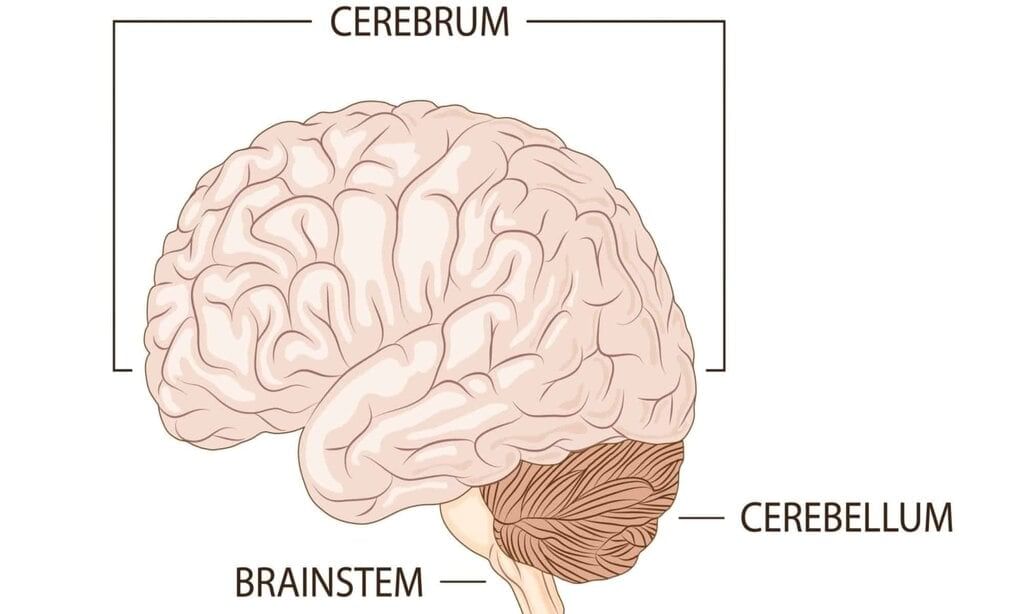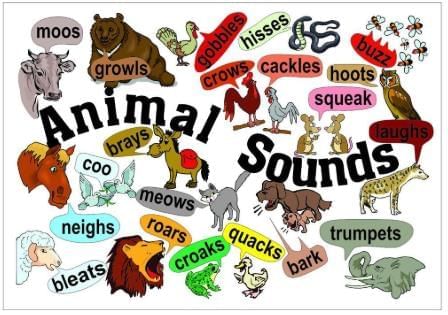Grade 6 Exam > Grade 6 Notes > Science for Grade 6 > Chapter Notes: Information Processing in Animals
Information Processing in Animals Chapter Notes | Science for Grade 6 PDF Download
Introduction
Animals use special parts of their body called sensory receptors or sensory organs to learn about the world around them. These organs, like eyes, ears, nose, tongue, and skin, help animals gather information about their surroundings. This information goes to the brain, which helps animals decide what to do. In this chapter, we will learn how animals use their senses, brain, and spinal cord to understand and respond to their environment.
Structure of a Brain
 Animal Brain
Animal Brain
- The brain is an important organ inside an animal’s head, protected by the skull.
- It takes information from sensory organs and decides what the animal should do.
- Animals have two types of behaviors:
- Instincts: Behaviors animals are born with, like ducklings following their mother.
- Learned behaviors: Behaviors animals learn from experience, like a squirrel finding food from a bird feeder.
- The brain helps animals use their senses and memories to make decisions.
- Perception: When the brain quickly understands information from sensory organs.
- Memory: When the brain saves information to use later.
Stimulus and Response
- A stimulus is something an animal senses, like seeing, hearing, or smelling something.
- A response is what the animal does after the brain processes the stimulus.
- Sensory organs send information to the brain, and the brain tells the animal how to act.
Animals Responding to a Sense of Sight
- When an animal sees a plant, the eyes send this information to the brain.
- The brain processes it and tells the animal to eat the plant, like a deer eating a plant.
- The brain saves this information as a memory, so the animal knows to eat the same plant next time.
- When an animal sees a predator:
- The eyes send the information to the brain.
- The brain tells the animal to run away to stay safe.
- When an animal sees its prey:
- The eyes send the information to the brain.
- The brain tells the animal to chase the prey.
Animals Responding to a Sense of Sound

- When an animal hears a predator coming:
- The ears send the sound information to the brain.
- The brain tells the animal to hide or run away, like a rabbit hiding from a predator.
- When an animal hears its prey:
- The ears send the sound to the brain.
- The brain tells the animal to search for the prey.
- Animals use sounds for different reasons:
- Mating calls: A female frog hears a male frog’s mating call and goes to find him.
- Territorial calls: A frog hears another frog’s territorial call and moves away.
- Warning calls: Some calls scare away predators.
Animals Responding to a Sense of Smell
- Animals have a strong sense of smell, better than humans.
- When an animal smells food:
- The nose sends the information to the brain.
- The brain tells the animal to go toward the food, like a dog sniffing for food.
- Animals use smell to recognize their babies or mates:
- The brain saves the smell as a memory.
- This helps animals protect their young ones or mates from danger.
- When an animal smells its prey:
- The nose sends the information to the brain.
- The brain tells the animal to search for the prey.
- When an animal smells a predator:
- The nose sends the information to the brain.
- The brain tells the animal to hide or run away.
Animals Responding to Other Senses
- Sense of taste:
- Animals taste food to know if it is safe to eat.
- The brain saves this information as a memory.
- This helps animals choose edible plants or prey.
- Sense of touch:
- Animals feel changes in temperature with their skin.
- When it’s hot, animals seek shade or stay underground, like a group of deer seeking shelter.
- When it’s cool, animals come out to find food or water.
- Animals use touch in social groups, like a parent animal cuddling its baby.
Brain and Spinal Cord
- The brain sends signals to different parts of the body to respond to stimuli.
- Special cells carry these signals from the brain to the body parts, like legs for running.
- The brain stem connects the brain to the spinal cord.
- The spinal cord:
- Is filled with special cells that carry messages from the brain to the body.
- Helps the animal move or act based on the brain’s instructions.
- Example:
- When an animal hears a predator, the ears send the sound to the brain.
- The brain decides to run and sends this signal through the spinal cord to the legs.
- The animal runs away to stay safe.
The document Information Processing in Animals Chapter Notes | Science for Grade 6 is a part of the Grade 6 Course Science for Grade 6.
All you need of Grade 6 at this link: Grade 6
|
124 docs|8 tests
|
FAQs on Information Processing in Animals Chapter Notes - Science for Grade 6
| 1. What are the main parts of the brain and their functions? |  |
Ans. The brain is divided into several parts, each with specific functions. The cerebrum is responsible for thinking, memory, and voluntary movements. The cerebellum controls balance and coordination. The brainstem regulates automatic functions such as breathing and heart rate. Together, these parts help process information and control responses to stimuli.
| 2. How do animals respond to their environment using their senses? |  |
Ans. Animals respond to their environment using their senses—sight, sound, smell, touch, and taste. When an animal detects a stimulus through these senses, its brain processes this information and generates a response. For example, if a predator is spotted (sight), an animal may flee for safety.
| 3. What role does the spinal cord play in information processing in animals? |  |
Ans. The spinal cord acts as a major pathway for information traveling between the brain and the rest of the body. It transmits signals that control reflexes and voluntary movements, allowing quick responses to stimuli without needing to involve the brain for every action.
| 4. How do different animals utilize their sense of smell? |  |
Ans. Animals utilize their sense of smell in various ways. For example, dogs have a highly developed sense of smell, which they use for tracking scents, finding food, and communicating with other dogs. Animals like sharks can detect blood in water from great distances, showcasing how critical smell is for their survival and hunting strategies.
| 5. Why is it important for animals to respond to stimuli? |  |
Ans. Responding to stimuli is vital for an animal's survival. It helps them avoid dangers, find food, and interact with other animals. Quick responses can mean the difference between life and death, as they allow animals to react to threats and opportunities present in their environment.
Related Searches



















